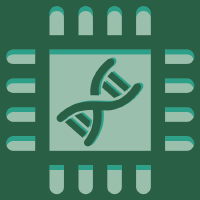Topic Menu
► Topic MenuTopic Editors


Frontiers in Fabrication of Screen-Printed Electrodes and Their Applications
Topic Information
Dear Colleagues,
In the last few years, there has been a growing demand for real-time sensors, wearable electronics and point-of care testing devices. This concern calls for more reliable, economic and environmentally sustainable approaches of mass production of transducers for the development of sensors and biosensors. In this aspect, the progress of screen-printing technology has played a key role since it is a well-established and recognized method for simple, rapid, and low-cost fabrication of sensors and biosensors. Screen-printed electrodes can be commercially acquired, but there are also many research groups involved in the fabrication of their own screen-printed devices by printing different inks on various types of plastic, ceramic or paper holdings (depending on the purpose of their studies and the requirements of sensitivity and selectivity of each analysis). Then, if necessary, they can be easily modified by the formation of a metal film or the incorporation of nanomaterials or (bio)molecules. Their design versatility, disposable character, low-cost character, miniaturized size, the option of being connected to portable instrumentation, and the non-need of polishing before the measurements approve their appropriateness for being used, among others, as point-of care testing devices (especially important in pandemic situations such as the current one caused by COVID-19) or as sensing tools for real-time monitoring, among others, in environmental, agricultural and food fields. Considering the popularization of screen-printed electrodes for sensing purposes over recent years, the dissemination of novel fabrication approaches using new substrates, geometries, inks and modifiers, the combination with other types of sensors (e.g., optical devices) and the development of new applications are essential for progress in the field of (bio) sensors. In this regard, the aim of this Topic, “Frontiers in Fabrication of Screen-Printed Electrodes and Their Applications”, is to attract original and innovative works but also review articles that cover the latest advances in screen-printing fabrication as well as their application as sensing devices in health control, environmental monitoring and agri-food analysis. We look forward to and welcome your participation in this Topic.
Prof. Dr. José Manuel Dı́az-Cruz
Dr. Antonio Florido
Dr. Núria Serrano
Topic Editors
Keywords
- chemical sensors
- biosensors
- screen-printing
- microfluidics devices
- electrochemical sensors
- optical sensors
- sensor arrays
- electronic tongues
- environmental monitoring
- agri-food analysis
- biomedical applications
- on-site analysis
- wearable sensors
- real-time sensing devices
- point-of-care device applications
Participating Journals
| Journal Name | Impact Factor | CiteScore | Launched Year | First Decision (median) | APC |
|---|---|---|---|---|---|

Biosensors
|
4.9 | 6.6 | 2011 | 17.1 Days | CHF 2700 |

Chemosensors
|
3.7 | 5.0 | 2013 | 17.1 Days | CHF 2700 |

Sensors
|
3.4 | 7.3 | 2001 | 16.8 Days | CHF 2600 |

MDPI Topics is cooperating with Preprints.org and has built a direct connection between MDPI journals and Preprints.org. Authors are encouraged to enjoy the benefits by posting a preprint at Preprints.org prior to publication:
- Immediately share your ideas ahead of publication and establish your research priority;
- Protect your idea from being stolen with this time-stamped preprint article;
- Enhance the exposure and impact of your research;
- Receive feedback from your peers in advance;
- Have it indexed in Web of Science (Preprint Citation Index), Google Scholar, Crossref, SHARE, PrePubMed, Scilit and Europe PMC.


